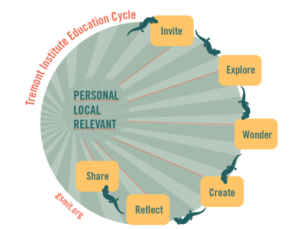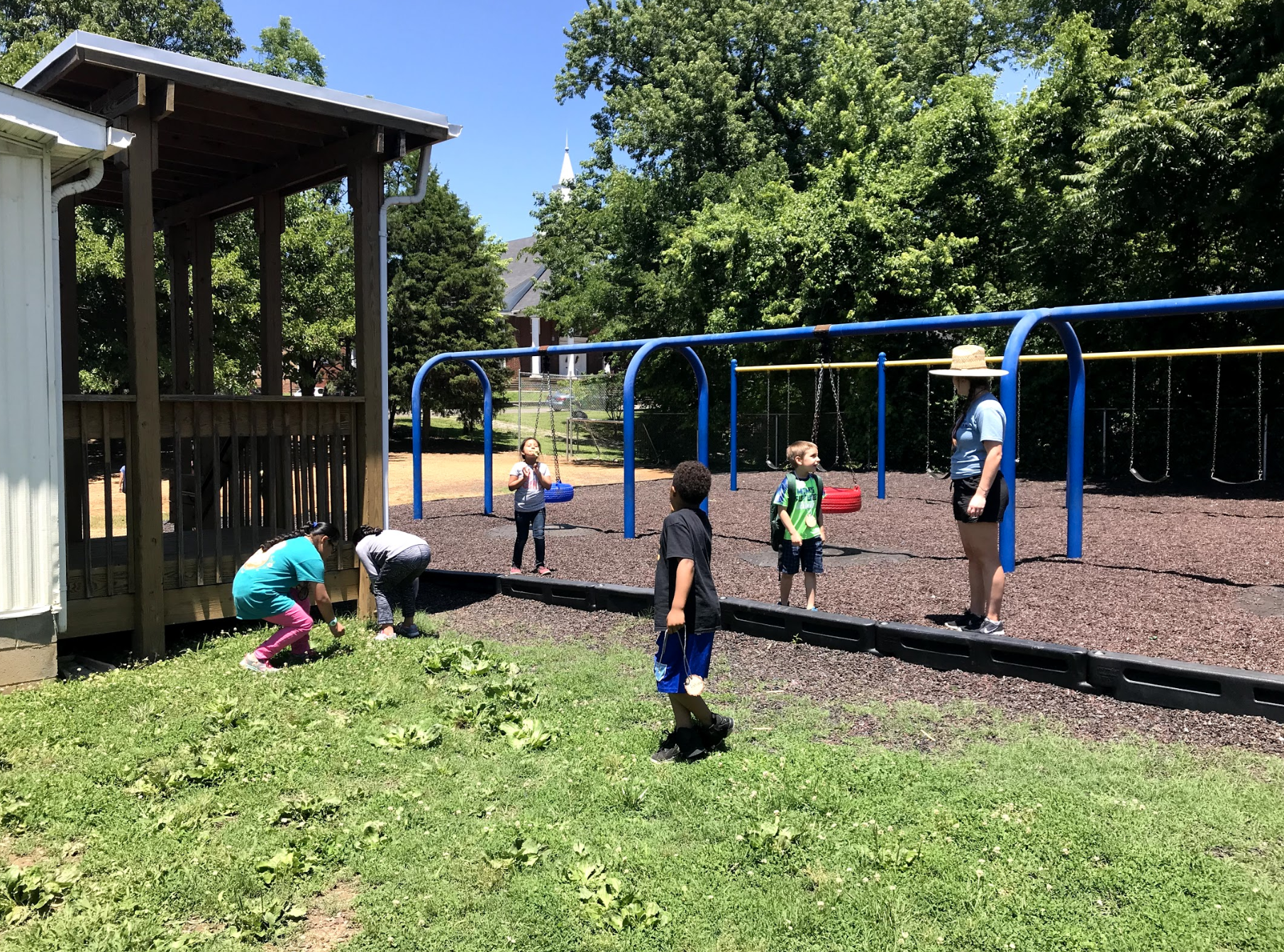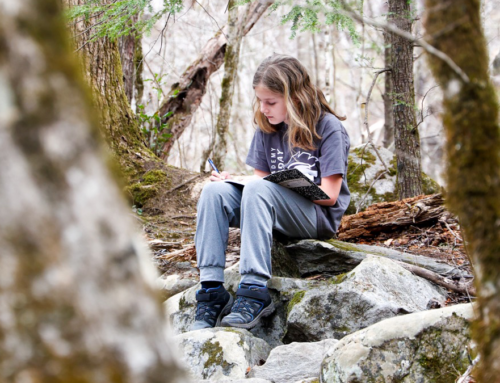In a new environment, we rely on our senses to draw us in and put meaning into each space. In this lesson, students will use their sense of sight to observe the colors found in their schoolyard, their home, and their community. There is beauty in all colors, and this lesson will challenge your students to explore those beauties and embrace colors in their schoolyard and communities. Students will develop a creative writing piece that encompasses what they each discovered about their color.

INVITE students into this colorful lesson with a reading of the book Black All Around by Patricia Hubbell. This children’s book celebrates the color black through engaging illustrations and opens up a discussion about observing the beauty in everyday objects. In this story, a little girl makes observations using her senses and illustrates them for the reader using descriptive words. Assess your students’ comprehension of the book by creating a class list of the descriptive language they hear throughout the story. Your students can reference this list while they write their creative writing pieces.
EXPLORE It is now your students’ turn to explore the natural world around them and find inspiration to write a creative piece on a color they’re given. Pass out a paint swatch chip to each student. These can be picked up for free from any store that sells paint. Next, take students out to your schoolyard and have them explore and investigate where their color occurs in nature. Once you are outside, take some time to model the exploration activity for your students with your own paint chip. Use a whiteboard or piece of chart paper to draw a table with 3 columns for Schoolyard, Home, and Community. Students will write data under each column on what they saw, felt, and were wondering about their color in each location. Then, send your students out into the schoolyard and let the exploration begin! Assist this observation stage by prompting students with broad questions that allow them to think deeper about their color’s location in the schoolyard.
WONDER Ask your students to brainstorm a separate list that contains areas within their home and community that they would like to investigate for their color. As they explore and brainstorm, tell your students to answer the following questions in their journals: What do they wonder about their color and where they are finding it? Is this color meaningful to them? If it is, what significance does it hold? What does this color remind them of?
CREATE As homework, tell your students to explore their homes and community for signs of their color. Instruct them to follow the same guidelines and routines that took place in the schoolyard, including making a list of where they find their color, writing down questions, and answering the same questions that they answered during their initial schoolyard investigation.
REFLECT After all of the explorations have taken place, take your students back out to the schoolyard to have reflective time. As they review their data, have your students compose a creative writing piece that compares and contrasts their observations from the schoolyard, their home, and their community. Encourage your students to express the emotions and memories that they encountered during their explorations with sensual verbiage.
SHARE each student’s creative writing piece in a color showcase. Give your students the freedom to decide how they want to display their writing piece, allowing each student to showcase what they found during the research of their color. Sharing findings with one another may also bring up further questions, observations, and emotions for the class to discuss that should not be overlooked.
Coordinating Academic Standards
NOTE: You can use this activity during a social studies lesson by asking your students to interview members of their family and community about what the color on their paint chip reminds them of or what emotions it makes them feel. Each student could then write a reflective piece about their color and involve the voices of their family, friends, and community, as well as historic symbols and/or meanings related to their color.
English Language Arts
L.CSE.1 – Demonstrate command of the conventions of standard English grammar and usage when writing or speaking.
L.VAU.5 – Demonstrate understanding of figurative language, word relationships, and nuances in word meanings.
W.PDW.4 – Produce clear and coherent writing in which the development and organization are appropriate to task, purpose, and audience.
W.RBPK.7 – Conduct short as well as more sustained research projects based on focus questions, demonstrating new understanding of the subject under investigation.
W.RW.10 – Write routinely over extended time frames (time for research, reflection, and revision) and shorter time frames (a single sitting or a day or two) for a range of tasks, purposes, and audiences.
Science
K.LS1.3 – Explain how humans use their five senses in making scientific findings.
K.ETS1.1 – Ask and answer questions about the scientific world and gather information using the senses.
SCRE.ETS3.4 – Make observations and ask questions about the natural world. Refine the questions such that they can be answered by way of scientific investigation.
SCRE.ETS3.8 – Engage in the peer-review process by giving and receiving detailed feedback throughout the process of planning and carrying out investigations.
SCRE.ETS3.13 – Select and use appropriate data tables, graphs, and diagrams to represent data. Use mathematical and computational thinking to look for patterns in data.




![A Deep Dive Into Wetlands [Free Lesson Plan]](https://gsmit.org/wp-content/uploads/2024/02/madeline-blog-cover-500x383.png)
![Are You a Math and Science Person or a History and English Person? [Free Lesson Plan]](https://gsmit.org/wp-content/uploads/2024/01/Girls-in-Science-Erin-Rosolina-3-1-500x383.jpg)

